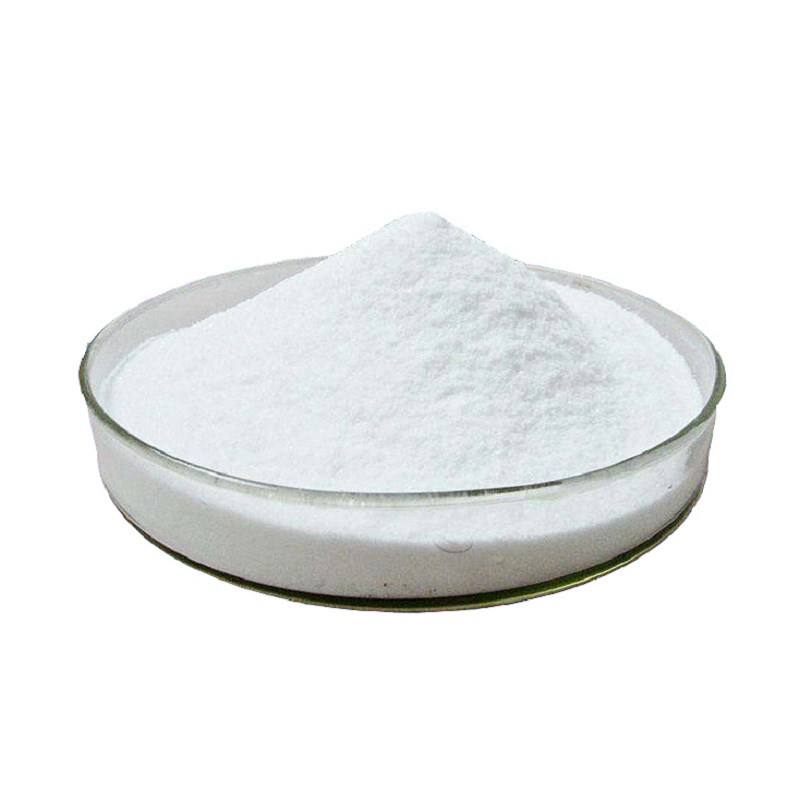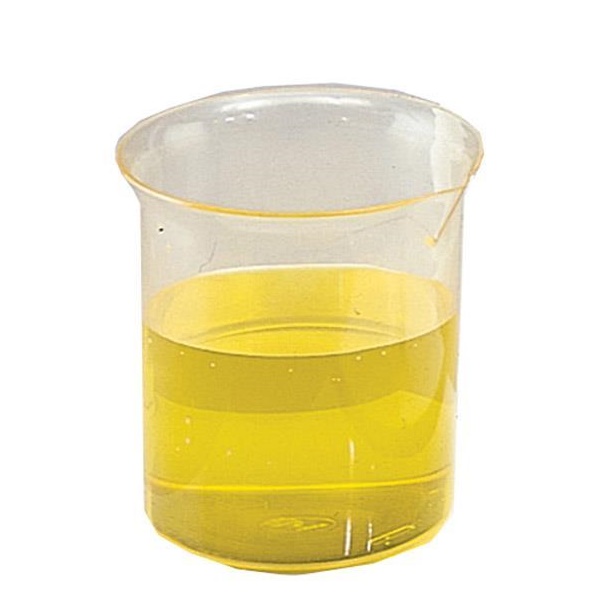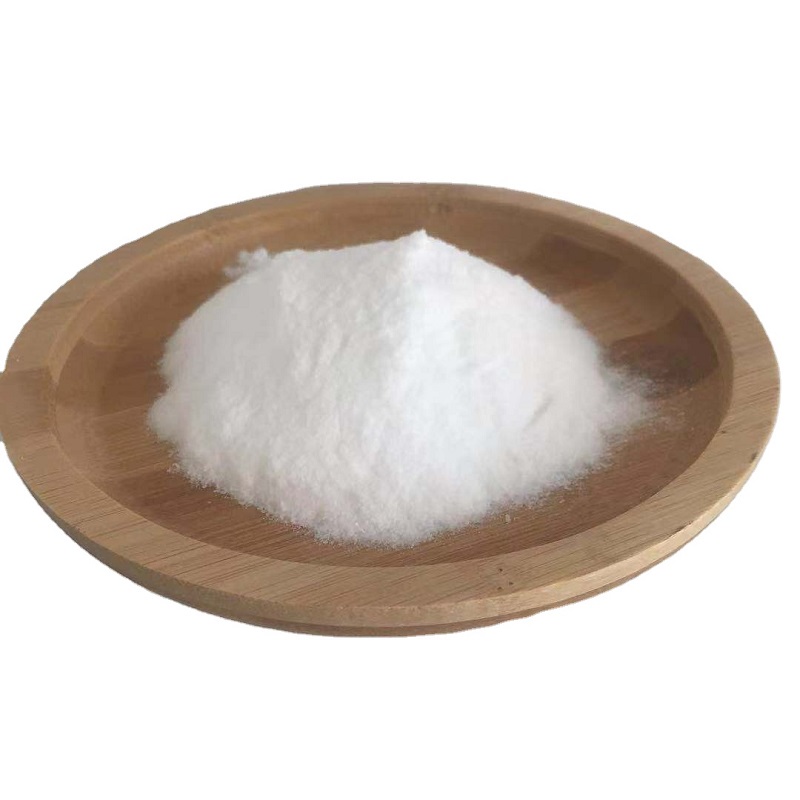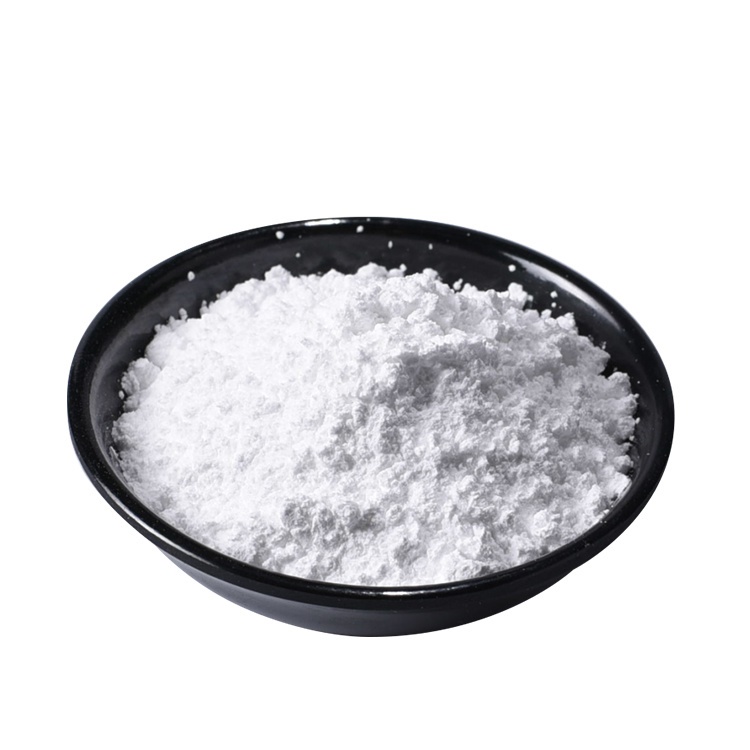

Fipronil CAS 120068-37-3
——————
CAS number : 120068-37-3
molecular formula : C12H4Cl2F6N4OS
EINECS : 424-610-5
——————
Email : info@deshangchem.com
Mobile : +86-13153039501
TEL : +86-531-88752665
CAS number:120068-37-3
molecular formula:C12H4Cl2F6N4OS
molecular weight:437.15
EINECS number:424-610-5
English synonyms:
4-((trifluoromethyl)sulfinyl)-;m&b46030;PRINCE;REGENT;FIPRONIL;5-Amino-1-[2,6-dichloro-4-(trifluoromethyl)phenyl]-4-[(trifluoromethyl)sulfinyl]-1H-pyrazole-3-carbonitrile;FIPRONIL <)>97 % (HPLC, EFF.);Goliath gel
Related categories:
Raw materials; insecticides; pesticides; insecticides (mite) agents; organic heterocycles and other insecticides; inorganic salts; raw materials; energy; small molecule inhibitors; organic fluorine intermediates; veterinary drug raw materials; pharmaceutical raw materials; food Additives; phenylpyrazole insecticides; pesticide raw materials; agricultural raw materials and preparations - insecticides; breeding and feed processing raw materials; organic chemical raw materials; pesticide intermediates; chemical products - organic chemicals; chemical pesticides; chemical raw materials - 1; Agrochemical raw materials; Organic chemical raw materials; PHARMACEUTICALS; Agro-Products; Heterocycles; Fipronil insecticidal spectrum is wide, and existing insecticide resistance without interaction; Pesticide intermediates; MYCODECYL;Pesticide residues, veterinary drugs and fertilizers; organochlorine insecticides; pesticide raw materials; intermediates; Pesticides intermediate; feed additives; veterinary drug raw materials; chemical industry; medical raw materials; Raw powder-insecticide; agricultural chemicals; pesticide raw material-insecticide; chemical material; chemical reagent; insecticide; API raw material-insecticide; chemical intermediate; veterinary raw material; chemical reagent-veterinary raw material ;Chemical reagents - pesticide raw materials; agricultural chemicals (pesticides and intermediates); chemical raw materials; reagents; reference substances;Ectoparasiticide;API;INSECTICIDE;Baby Food Directives 13/2003 EC&14/2003 ECPesticides&Metabolites;AcaricidesMethod Specific;Alpha sort;E-GAlphabetic;European Community: ISO and DIN;
Introduction:
Fipronil, chemical name 5-amino-1-(2,6-dichloro-4-trifluoromethylphenyl)-4-trifluoromethyl-sulfinylpyrazole-3-carbonitrile, is the first Benzopyrazoles for pest control. Since it was discovered in 1987, it has been widely used in many fields such as agriculture and veterinary medicine, and has become an important insecticide variety. Fipronil, trade name Fipronil, is a new type of benzopyrazole insecticide. Compared with traditional insecticides (organophosphorus, pyrethroids, carbamates), this drug has With the advantages of broad spectrum and high efficiency, it has been widely used in many agricultural fields and is a commonly used insecticide for pest control.
Chemical properties
| Melting point | 200-201°C |
| Boiling point | 510.1±50.0 °C(Predicted) |
| Density | 1.477-1.626 |
| Vapor Pressure | 3.7×10-7 Pa (25 °C) |
| Storage conditions | Keep in dark place,Sealed in dry,2-8°C |
| Acidity coefficient(pKa) | -5.86±0.20(Predicted) |
| Water solubility | 1.9-2.4 mg 1l-1 (20 °C) |
| Shape | neat |
| Color | White to Light yellow |
| Maximum wavelength(λmax) | 208nm(H2O)(lit.) |
Merck | 14,4085 |
BRN | 8090115 |
| CAS database | 120068-37-3(CAS DataBase Reference) |
The pure product is white solid, m.p.200.5~201℃, relative density 1.48~1.63, vapor pressure 3.73×10-7Pa (2.8×10-7Pa) (20℃). The solubility is: acetone 54.6g/100mL, dichloromethane 2.23g/100mL, methanol 13.75g/100mL, hexane and toluene 0.3g/mL, water 1.9mg/L. Partition coefficient (n-octanol/water) 4.0. Stable under normal storage conditions, the half-life in water is 135d, and the photolysis half-life in water is 8h.
Use
● Pyrazoles containing fluorine are broad-spectrum insecticides with high activity and wide application range. They have been produced against pests such as Hemiptera, Thysanoptera, Coleoptera, and Lepidoptera, as well as pyrethroids and carbamates. Resistant pests also show extremely high susceptibility. It can be used in rice, cotton, vegetables, soybeans, rapeseed, tobacco leaves, potatoes, tea, sorghum, corn, fruit trees, forests, public health, animal husbandry, etc., to control rice borers, brown planthoppers, rice weevils, cotton bollworms, armyworms, and side dishes Moths, cabbage caterpillars, cabbage armyworms, beetles, root-cutting worms, bulb nematodes, caterpillars, fruit tree mosquitoes, wheat long tube aphids, coccidia, trichomonas, etc. The recommended dosage is 12.5~150g/hm2. Our country has approved field efficacy tests on rice and vegetables. The formulation is 5% suspension and 0.3% granule.
● It is mainly used in crops such as rice, sugar cane, and potatoes. In animal health care, it is mainly used to kill parasites such as fleas and lice on cats and dogs.
Production method
● Preparation of 5-amino-3-cyano-1-(2,6-dichloro-4-trifluoromethylphenyl)pyrazole Nitrosylsulfonyl prepared from 7 g of sodium nitrite and 27.5 mL of concentrated sulfuric acid Dilute the suspension with acetic acid, add 21.2g of 2,6-dichloro-4-trifluoromethylaniline acetic acid solution 50mL dropwise at 25~32°C, raise the temperature to 55°C, heat for 20min, pour 2,3-dicyano In a solution of ethyl propionate in acetic acid (60 mL) and water (125 mL), stir for 15 minutes, add water, separate the oil layer, extract with dichloroethane, combine the oil layers, wash with ammonia water to pH 9, separate layers, water, dilute hydrochloric acid Washed, dried, filtered and evaporated in vacuo, the oil was recrystallized in toluene and hexane with a yield of 70.9%.
Preparation of 5-amino-3-cyano-1-(2,6-dichloro-4-trifluoromethylphenyl)-4-trifluoromethylthiopyrazole
● A dichloromethane solution of trifluoromethylsulfur chloride (10.8 g) was added dropwise to a dichloromethane solution containing 20 g of the previous step product within 1 h. Stir overnight at room temperature, wash with water, dry, filter, and dissolve to obtain 26.3 g of solid matter, and obtain the product after recrystallization, with a yield of 92%.
● Synthesis of fipronil Under stirring, treat 10 g of the product from the previous step in dichloromethane solution with 4.5 g of m-chloroperoxybenzoic acid. After stirring overnight, add 2 parts of 1.6 g of m-chloroperoxybenzoic acid and leave it for 2 days. Diluted with ethyl acetate, washed with sodium sulfite solution, sodium carbonate solution and water successively, dried, filtered, precipitated, and eluted with dichloromethane on a SiO2 chromatographic column to obtain 6.0 g of fipronil, with a yield of 57.8 %.

Fipronil CAS 120068-37-3
CAS number:120068-37-3
molecular formula:C12H4Cl2F6N4OS
molecular weight:437.15
EINECS number:424-610-5
English synonyms:
4-((trifluoromethyl)sulfinyl)-;m&b46030;PRINCE;REGENT;FIPRONIL;5-Amino-1-[2,6-dichloro-4-(trifluoromethyl)phenyl]-4-[(trifluoromethyl)sulfinyl]-1H-pyrazole-3-carbonitrile;FIPRONIL <)>97 % (HPLC, EFF.);Goliath gel
Related categories:
Raw materials; insecticides; pesticides; insecticides (mite) agents; organic heterocycles and other insecticides; inorganic salts; raw materials; energy; small molecule inhibitors; organic fluorine intermediates; veterinary drug raw materials; pharmaceutical raw materials; food Additives; phenylpyrazole insecticides; pesticide raw materials; agricultural raw materials and preparations - insecticides; breeding and feed processing raw materials; organic chemical raw materials; pesticide intermediates; chemical products - organic chemicals; chemical pesticides; chemical raw materials - 1; Agrochemical raw materials; Organic chemical raw materials; PHARMACEUTICALS; Agro-Products; Heterocycles; Fipronil insecticidal spectrum is wide, and existing insecticide resistance without interaction; Pesticide intermediates; MYCODECYL;Pesticide residues, veterinary drugs and fertilizers; organochlorine insecticides; pesticide raw materials; intermediates; Pesticides intermediate; feed additives; veterinary drug raw materials; chemical industry; medical raw materials; Raw powder-insecticide; agricultural chemicals; pesticide raw material-insecticide; chemical material; chemical reagent; insecticide; API raw material-insecticide; chemical intermediate; veterinary raw material; chemical reagent-veterinary raw material ;Chemical reagents - pesticide raw materials; agricultural chemicals (pesticides and intermediates); chemical raw materials; reagents; reference substances;Ectoparasiticide;API;INSECTICIDE;Baby Food Directives 13/2003 EC&14/2003 ECPesticides&Metabolites;AcaricidesMethod Specific;Alpha sort;E-GAlphabetic;European Community: ISO and DIN;
Introduction:
Fipronil, chemical name 5-amino-1-(2,6-dichloro-4-trifluoromethylphenyl)-4-trifluoromethyl-sulfinylpyrazole-3-carbonitrile, is the first Benzopyrazoles for pest control. Since it was discovered in 1987, it has been widely used in many fields such as agriculture and veterinary medicine, and has become an important insecticide variety. Fipronil, trade name Fipronil, is a new type of benzopyrazole insecticide. Compared with traditional insecticides (organophosphorus, pyrethroids, carbamates), this drug has With the advantages of broad spectrum and high efficiency, it has been widely used in many agricultural fields and is a commonly used insecticide for pest control.
Chemical properties
| Melting point | 200-201°C |
| Boiling point | 510.1±50.0 °C(Predicted) |
| Density | 1.477-1.626 |
| Vapor Pressure | 3.7×10-7 Pa (25 °C) |
| Storage conditions | Keep in dark place,Sealed in dry,2-8°C |
| Acidity coefficient(pKa) | -5.86±0.20(Predicted) |
| Water solubility | 1.9-2.4 mg 1l-1 (20 °C) |
| Shape | neat |
| Color | White to Light yellow |
| Maximum wavelength(λmax) | 208nm(H2O)(lit.) |
Merck | 14,4085 |
BRN | 8090115 |
| CAS database | 120068-37-3(CAS DataBase Reference) |
The pure product is white solid, m.p.200.5~201℃, relative density 1.48~1.63, vapor pressure 3.73×10-7Pa (2.8×10-7Pa) (20℃). The solubility is: acetone 54.6g/100mL, dichloromethane 2.23g/100mL, methanol 13.75g/100mL, hexane and toluene 0.3g/mL, water 1.9mg/L. Partition coefficient (n-octanol/water) 4.0. Stable under normal storage conditions, the half-life in water is 135d, and the photolysis half-life in water is 8h.
Use
● Pyrazoles containing fluorine are broad-spectrum insecticides with high activity and wide application range. They have been produced against pests such as Hemiptera, Thysanoptera, Coleoptera, and Lepidoptera, as well as pyrethroids and carbamates. Resistant pests also show extremely high susceptibility. It can be used in rice, cotton, vegetables, soybeans, rapeseed, tobacco leaves, potatoes, tea, sorghum, corn, fruit trees, forests, public health, animal husbandry, etc., to control rice borers, brown planthoppers, rice weevils, cotton bollworms, armyworms, and side dishes Moths, cabbage caterpillars, cabbage armyworms, beetles, root-cutting worms, bulb nematodes, caterpillars, fruit tree mosquitoes, wheat long tube aphids, coccidia, trichomonas, etc. The recommended dosage is 12.5~150g/hm2. Our country has approved field efficacy tests on rice and vegetables. The formulation is 5% suspension and 0.3% granule.
● It is mainly used in crops such as rice, sugar cane, and potatoes. In animal health care, it is mainly used to kill parasites such as fleas and lice on cats and dogs.
Production method
● Preparation of 5-amino-3-cyano-1-(2,6-dichloro-4-trifluoromethylphenyl)pyrazole Nitrosylsulfonyl prepared from 7 g of sodium nitrite and 27.5 mL of concentrated sulfuric acid Dilute the suspension with acetic acid, add 21.2g of 2,6-dichloro-4-trifluoromethylaniline acetic acid solution 50mL dropwise at 25~32°C, raise the temperature to 55°C, heat for 20min, pour 2,3-dicyano In a solution of ethyl propionate in acetic acid (60 mL) and water (125 mL), stir for 15 minutes, add water, separate the oil layer, extract with dichloroethane, combine the oil layers, wash with ammonia water to pH 9, separate layers, water, dilute hydrochloric acid Washed, dried, filtered and evaporated in vacuo, the oil was recrystallized in toluene and hexane with a yield of 70.9%.
Preparation of 5-amino-3-cyano-1-(2,6-dichloro-4-trifluoromethylphenyl)-4-trifluoromethylthiopyrazole
● A dichloromethane solution of trifluoromethylsulfur chloride (10.8 g) was added dropwise to a dichloromethane solution containing 20 g of the previous step product within 1 h. Stir overnight at room temperature, wash with water, dry, filter, and dissolve to obtain 26.3 g of solid matter, and obtain the product after recrystallization, with a yield of 92%.
● Synthesis of fipronil Under stirring, treat 10 g of the product from the previous step in dichloromethane solution with 4.5 g of m-chloroperoxybenzoic acid. After stirring overnight, add 2 parts of 1.6 g of m-chloroperoxybenzoic acid and leave it for 2 days. Diluted with ethyl acetate, washed with sodium sulfite solution, sodium carbonate solution and water successively, dried, filtered, precipitated, and eluted with dichloromethane on a SiO2 chromatographic column to obtain 6.0 g of fipronil, with a yield of 57.8 %.
Team Presentation







